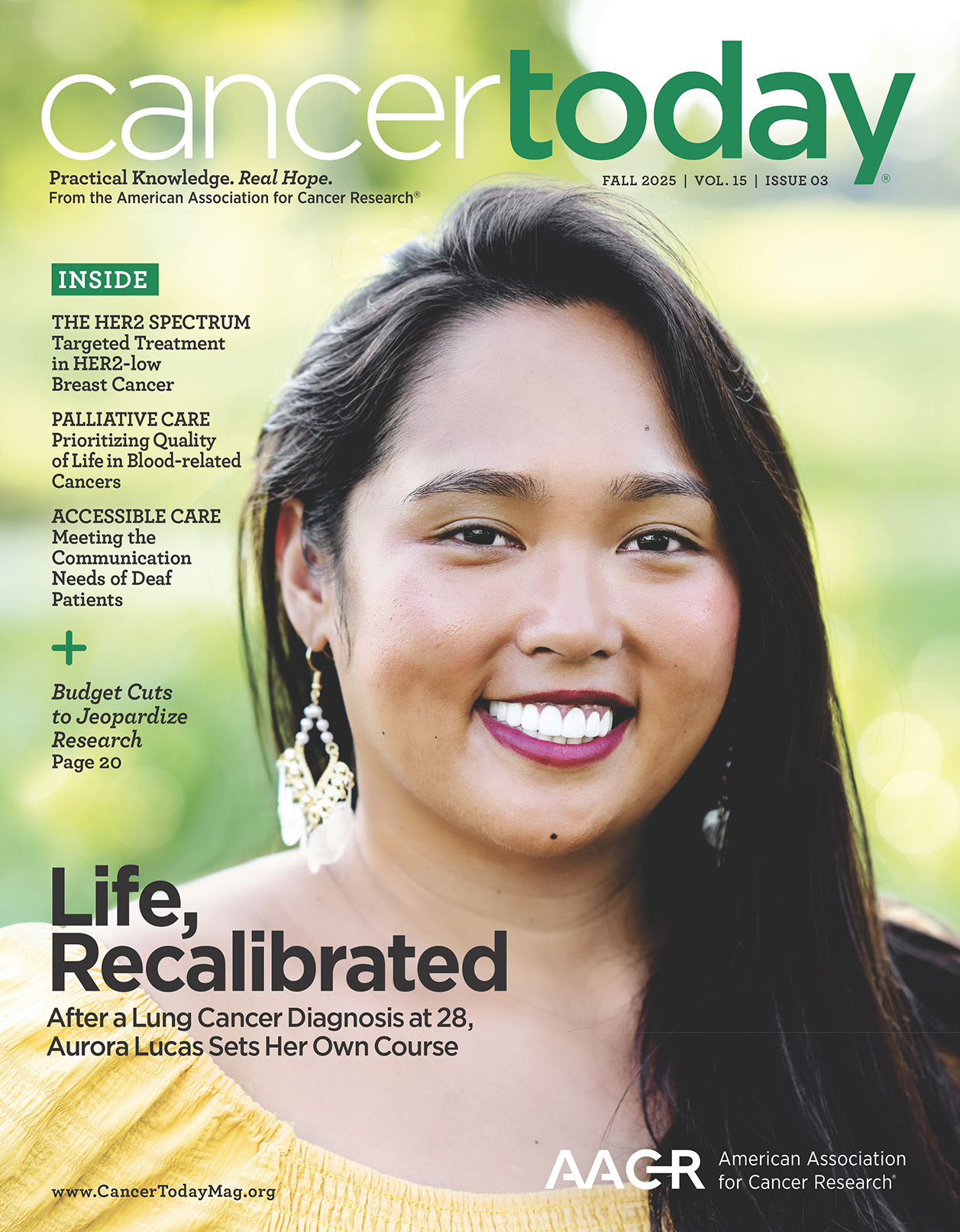DIFFUSE INTRINSIC PONTINE GLIOMA (DIPG) is a rare and aggressive brain tumor that starts in the pons, the part of the brain stem responsible for breathing and movement. It primarily affects young children, with about 300 cases diagnosed each year in the U.S. The majority of the people who are diagnosed with this disease will live between eight and 11 months.
DIPG is challenging to treat because the tumor cells diffuse into the surrounding brain tissue, making surgical removal impossible. Standard treatments, like chemotherapy and radiation, are often ineffective, leaving patients with few options.
Two early-phase clinical trials investigated a novel approach to administering CAR T-cell therapy for DIPG—delivering the cells directly into the ventricles of the brain, a method called intracerebroventricular (ICV) infusion. Early results show signs that the cancer responded to treatment and extended survival, but researchers are still working to find out which patients may benefit from this treatment and how to address its side effects.
Delivering CAR T-cell Therapy to the Brain
In a phase I trial published Jan. 7, 2025, in Nature Medicine, 21 children with DIPG received repeated doses of CAR T cells. CAR (chimeric antigen receptor) T cells are a patient’s own T cells that have been genetically modified to recognize and destroy cancer cells. The therapy targeted a protein called B7-H3 and was delivered directly into the brain.
“By giving CAR T cells directly into the brain, we essentially avoid systemic side effects and can get the CAR T cells directly where they need to be,” says Nicholas Vitanza, the trial’s lead investigator and a pediatric neuro-oncologist and scientific director of brain tumor research at Seattle Children’s in Washington.
Participants lived for a median of 19.8 months after diagnosis and 10.7 months after receiving their first infusion of CAR T cells. Notably, the study reported that three people were still alive 44, 45 and 52 months after diagnosis.
Another phase I trial, published Nov. 13, 2024, also in Nature Medicine, treated 11 people with H3K27M-mutant DIPG or spinal diffuse midline glioma (sDMG), a rare and aggressive cancer that develops in the spinal cord. The study used a different CAR T-cell therapy, this one designed to target the GD2 molecule. In an initial round of treatment given by IV, few people had side effects that required limiting treatment, and, in some cases, their tumors shrank drastically. Eight people who showed benefit from the IV dose later received additional infusions directly into the brain via ICV. One person achieved a complete response that lasted more than 30 months.
“While these phase I trials are designed to measure safety and feasibility, it is impossible to ignore the fact that three patients with DIPG [across both trials] are still alive around four years after their diagnoses,” says David Kram, a pediatric neuro-oncologist at UNC Lineberger Comprehensive Cancer Center in Chapel Hill, North Carolina, who was not involved in the studies. “This is without precedent and justifies the excitement. I believe there is ample justification to continue with the CAR T approach for both DIPG and DMG.”
Next Steps for CAR T-cell Therapy in Brain Tumors
Despite its promise, CAR T-cell therapy poses several challenges in this diagnosis.
Cost is a significant barrier. The total price of existing CAR T-cell therapies can exceed $350,000 per infusion, not including additional medical procedures and facility fees. For uninsured or underinsured patients, this can create a heavy financial burden.
Access is also limited. Because CAR T-cell clinical trials are only available at select specialized hospitals, many families must travel long distances to participate, and they may face issues with insurance coverage along the way.
Researchers also must manage the potentially serious side effects associated with the therapy, like cytokine release syndrome and inflammation or swelling in the brain. These side effects can mimic tumor progression, making it hard to determine whether treatment is working.
These trials were primarily designed to test safety, and much work remains to refine and expand CAR T-cell therapy for DIPG. “Next key steps will be to explore optimal CAR T-cell constructs, optimal CAR T-cell doses and route of administration, mitigating CAR T-cell toxicities and ultimately what treatments could be combined with CAR T-cell therapy to achieve the best possible outcomes,” Kram says.
Understanding why some people respond to treatment is also a major focus. “We have two patients that are now alive more than four years from their diagnosis and still on the clinical trial, doing extremely well, but we are yet to identify what may make them distinct,” Vitanza says.
Cancer Today magazine is free to cancer patients, survivors and caregivers who live in the U.S. Subscribe here to receive four issues per year.





